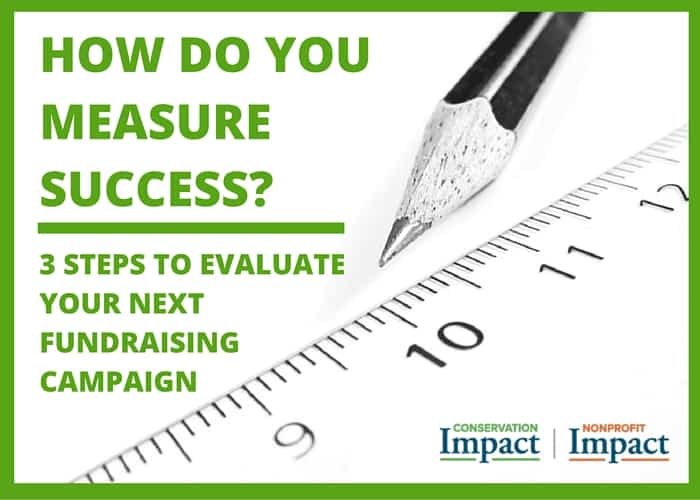
3 Steps to Evaluate Your Fundraising Campaign (+ 3 Ways to Take it to the Next Level)
I just got off the phone with a client we worked with on a fundraising plan last year.
- Client: So far our year-end mail and email campaign is up 50% over last year.
- Me: Congratulations! That’s great news!
- Client: Yes, but… the increase is really from two large gifts that came in out of the blue.
Hmmm. So, is that a good thing or a bad thing? It depends.
I’ve talked with a lot of clients about their year-end fundraising appeals recently, and, to be honest, I love getting these calls each year.
It’s a lot of fun to put my fundraiser hat back on and brainstorm some wording for a letter, troubleshoot how to manage that committee volunteer who’s not following through , or help think through the best way to handle an opportunity with a potential funder. Unfortunately, what many of these fundraising efforts lack is any clear goal beyond raise X dollars.
Why is that a problem?
Take the story above. If my client’s only goal is to raise a set dollar amount, then congratulations are appropriate. But what if the goal is to raise a certain amount of unrestricted money and those two large gifts that put them over the top were program-restricted? Then the picture is quite different.
Three simple steps
There’s no way to know if you are successful if you don’t know which ruler you’re using. Being able to evaluate the success of your fundraising efforts requires clear goals at the outset. So, before next year:
- Download our new Fundraising Campaign Evaluation Worksheet
- Set clear goals and objectives for your fundraising campaign
- Use your data to identify trends and issues and refine your fundraising strategies over time
The next level
And if your organization already thinks through its fundraising goals before you get started, here are some ways to take it to the next level in 2013:
- Think about how your various fundraising efforts interact with one another and set a goal to maximize this effect (e.g., a goal for how many event attendees you will turn into annual members)
- Segment your donor base, experiment with customized messages and communications vehicles, and set goals for each segment
- Select one new target market segment of donors and set a goal to engage a certain number of them as donors this year

